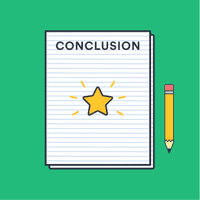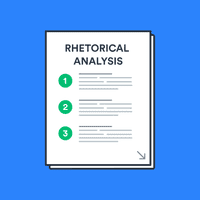Primary sources and why you should use them

Primary sources are original documents or artifacts. They were created at the time period you are studying and can be used as evidence. Primary sources are contemporary resources, created by someone who witnessed a historical event, lived in the time under study, or created art or objects which are studied.
➡️ What are secondary sources?
➡️ What is the difference between primary and secondary sources?
How do I know if a source is a primary source?
Generally speaking, if your primary source is in text format, it will not contain any footnotes, references, or citations. A primary source is anything original that comes from the period or event which you are studying.
Examples of primary sources:
- Art
- Letters
- First-hand evidence or oral histories
- Audio recordings or video footage
- Photographs
- Diaries
- Interviews
- Legal and/or financial documents
- Results of experiments
- Architectural plans or drawings
- Newspaper reports or magazine articles
- Historical artifacts such as clothing samples, fragments of clay, cutlery, crockery, remnants of dwellings
How do I find primary sources?
You can often find primary sources by not looking for them specifically in your first step. Using secondary resources as your starting point will direct you to the primary source(s) through footnotes, references, and citations.
A history book will often refer to letters, diaries, or accounts of historical writing, so these types of sources give you some clues as to where the author got their information. Reading bibliographies will point you in the direction of the original texts, so you can follow the trail of breadcrumbs to the primary sources and see if they contain credible evidence.
If you do want to start at the primary source then here are some common examples of starting points for you:
| Field of study | Primary sources |
|---|---|
Art | Original painting, sculpture |
Science | Data from experiments, method of experimentation |
Materials of history | Fabric remnants, letters, photographs |
English | riginal text without revisions, annotations or translations |
Architecture | Blueprints, sketches, building foundations |
Law | Eyewitness accounts, bank statements, police reports, court reports, transcript of a call to emergency services |
You can learn about the specifics of certain primary sources and cases where the distinction between primary and secondary source might not be so simple here:
➡️ Is a letter a primary source?
➡️ Is an interview a primary source?
➡️ Is a painting a primary source?
➡️ Is an autobiography a primary source?
➡️ Is census data a primary source?
➡️ Is the US Constitution a primary source?
➡️ Is a newspaper article a primary source?
Why do I need primary sources?
You're probably wondering why you can't use books and journal articles written by someone else as your main source of information. You can, but your research won't be as sound as it would be if you use academic writing alone instead of adding primary sources. That's because books and articles are written by people - people who have creator bias, conscious or subconscious - and their accounts can be subjective.
Going back to the original provides you with the opportunity to view the source as it was, as unaltered direct evidence based on first-hand evidence. This enables you to interpret the event or object without questions of creator bias clouding your judgment. Generally speaking, of course - prejudice can still be found in original sources too.
How do I access primary sources?
This depends on the type of source that you want to use. Often, you will have to make an appointment with the museum, library, or institution that owns the primary sources you wish to examine. Generally, access to primary source materials is given with supervision, to ensure that the original materials are not damaged in any way. If you are examining primary sources relating to a court case or anything which might be ‘sensitive' or involving people who are still alive, you may have to sign a confidentiality contract to gain access to archives.
Do I need to reference primary sources?
Yes. You need to reference a primary source just as you would a secondary source. Primary sources are original materials just like any other, and as such you need to reference the material just as you would academic books or articles.
Most primary sources come with a unique code, and this code is their identifier. This differs from depository to depository, so make sure you use the correct code depending on the place you access the source. Then you apply this identifier in the way in which your citation style requires, such as APA, Harvard, Chicago, etc.
Here are some examples:
[Terracotta statuette of a woman]. (2nd century B.C.). Metropolitan Museum of Art, New York, NY.
Matisse, H. (1906) Olive Trees at Collioure [Oil on canvas]. Robert Lehman Collection, Metropolitan Museum of Art, New York, NY.
Highsmith, C. M. (2008) Mount Foraker, Denali National Park, Alaska. Carol M. Highsmith Archive, Library of Congress, Washington, DC.
Frequently Asked Questions about primary sources
👨🏫 Is an interview a primary source?
The answer to this is not straightforward, but in general, the answer is: yes. When you conducted the interview yourself and included it as supporting evidence in your research paper, then the interview is definitely a primary source. Take a look at Is an interview a primary source? for more insight on this topic.
🖼️ Is a painting a primary source?
Yes, if the painting originated at the time it depicts, then it is a primary source. For instance, Da Vinci's Mona Lisa is a primary source because it is the most famous art piece during the Renaissance period. Works of art, in general, are considered primary sources. However, in some cases, paintings are considered secondary sources. Take a look at Is a painting a primary source? for more insight on this topic.
📘 Is an encyclopedia a primary source?
No, an encyclopedia is a tertiary source. Encyclopedias provide extent information about a particular topic, time period, or person in the form of entries arranged in alphabetical order. Encyclopedias, indexes, and works alike are known for compiling primary and secondary sources, as a result, they are considered tertiary sources. Take a look at Is an Encyclopedia a primary source? for more insight on this topic.
🗺️ Is a map a primary source?
A map can be a primary or secondary source. If a map was produced as immediate evidence of an area, then it is a primary source. If the map is just a symbolic depiction of a space, then it is a secondary source. Take a look at Is a map a primary source? for more insight on this topic.
📓 Is an autobiography a primary source?
Yes, an autobiography is a primary source. Authors of autobiographies are direct witnesses of the events and time described in the narration. Take a look at Is an autobiography a primary source? for more insight on this topic.


